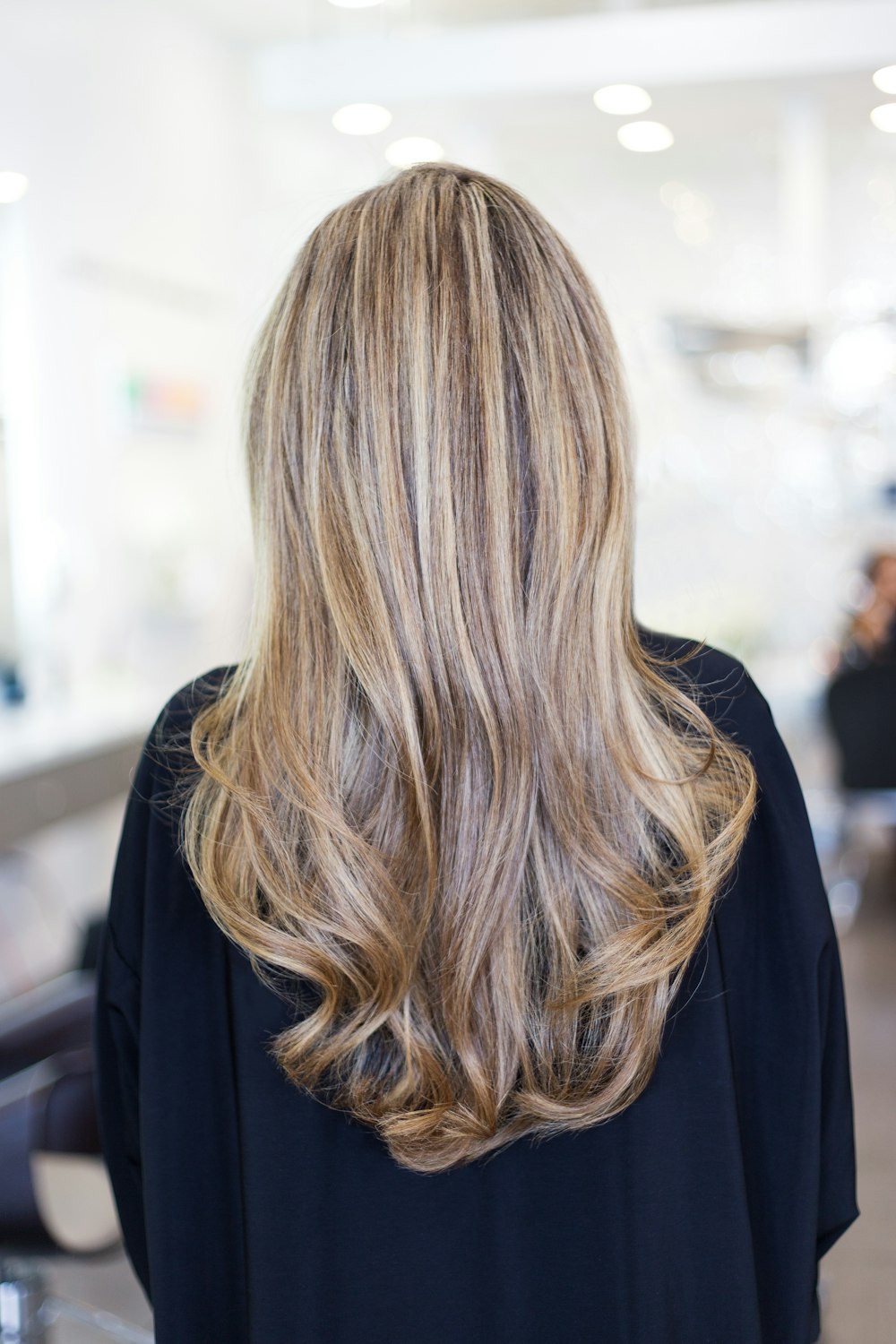
Photo by “Jessie Dee” Dabrowski www.jessiedee.net on Unsplash
Hairstyles tend to go through revolutions over time. What’s perfectly normal in one era seems completely weird in another.
Consider victory curls from the 1940s. They were the fashion of the time for women living in the aftermath of WWII but quickly fell into disfavor just a few years later as the 1960s came around.
The evolution of hairstyles isn’t something that’s predictable, either. It was hard to imagine that the mullets of the 1970s would yield to the pixie cuts and punk style of the 80s. While J-Lo gave us a throwback to 1990s hairstyles, it was hard to imagine how much things would mellow in the latter part of the 20th century.
If all this is confusing to you, you’re not alone. Hairstyling is something that’s changing and evolving all the time. It’s also gone through cycles throughout history. Women in the 17th century would have looked at paintings of those from the 16th century and wondered what they were trying to achieve. Likewise, those from ancient Persia would have struggled to understand women’s hairstyles in ancient Rome.
The purpose of this blog post is to take you on a journey of various hairstyles throughout history. The aim is to teach you something and give you a better context and understanding of why certain styles were popular in some eras and not others. Hopefully, it will help you see where the world will likely go in the future, and how hairstyles will develop over time.
The Ancient World
As alluded to above, hairstyles have gone through various revolutions over time. In the ancient world, it was a way of expressing one’s personality and status, but also a form of art and ritual. Women would often spend hours preparing their hair for special occasions or momentous events, like weddings or public circuses.
For instance, in Egypt, people shaved their heads and wore elaborate wigs made from a combination of human and animal hair. This setup allowed them to dye their hair special colors and decorate it with accessories that would be difficult to achieve with regular hair. Flowers, jewels, and beads were regularly a part of their attire and were meant to convey cultural ideas and individual identities.
Egyptians also used various cosmetics, oils, and perfumes to enhance their appearance and protect the skin from the sun. People spent a lot of time outside and wanted to minimize damage while enjoying the pleasant environment close to the Nile.
Sometimes, women would braid their hair and wrap it around their heads, a bit like a coiled python. Others would add headbands and tiaras, similar to what you might see today. Interestingly, going to an ancient Egyptian event would look and feel similar to a modern gala.
Egypt wasn’t the only hair care capital in the ancient world. Ancient Greece and Rome were also adopting hairstyles influenced by their cultures.
Most women in Greece and Rome wore long and curly hair as a sign of femininity and elegance. People used hot curling irons made of metal and wood and then wrapped their hair around them to create curls and ringlets, similar to the curling irons we might use today. But instead of using electricity to heat them, they would have used open fires.
The ancient Greeks and Romans developed some famous hairstyles that remain popular today. The Aphrodite knot, a low bun at the nape of the neck, for instance, is something that you often see at elegant dinner dos or significant, posh events.
You might also encounter the Venus ringlet. Ancient women used to display a single curled ringlet from their foreheads, usually matted down using oil. Others still experiment with a circular crown of braids or flowers, but these are less popular than they were in the past.
If you want to try a Greek or Roman hairstyle, it’s critical to accessorize correctly. Adding ribbons, wreaths, and a pearl necklace to your outfit can complete the style.
The Middle Ages And Renaissance
The middle ages and Renaissance saw a reinvigoration of hairstyles, influenced by the social and religious norms of the time. As societies became wealthier and more diverse, the amount of effort women could dedicate to styling their hair once again increased to those of the ancient world. Artistic revolutions bled into female attire and opened up a new era of experimentation not seen before.
Women, for instance, often braided their hair or wore it in simple buns and twists. Some adopted elaborate cones, horns, and towers to distinguish themselves from their peers.
Other changes included padding hair with wool or wire, and covering it with a veil of fabric or jewels.
Italy, as you might imagine, became a center for new fashions and styles. Women would often part the hair in the middle and curl it at the ends. Adding hairpieces, extensions, and false braids added volume and length to their locks.
Most living in the Mediterranean had blonde hair at the time. However, they began experimenting with dying it blonde, creating new and unusual looks that would have appeared exceptionally striking at the time. Today’s chemical-based bleaches weren’t available at the time, so they used lemon juice instead.
If you want to achieve a similar look to medieval Italian women, you can do it by lightly dyeing your hair blond or wearing it in a bun or twist. Adding accessories like a hood, veil, or hat can also help significantly.
The 20th Century
Of course, the biggest changes to women’s hair occurred in the 20th century as the wealth from the 19th century began to make entirely new approaches to life possible.
In the early 1900s, the Gibson Girl hairstyle dominated, copied from the illustrations of Charles Dana Gibson who was famous for depicting idealistic women from the era. The style was tall, elegant, and slender, with hair piled high on the head, with some soft curls draping around the face and neck. It’s similar to the sort of styles you might see in early 20th-century dramas.
With the 1920s came the bob. The rebellious spirit of the flappers eschewed the daintier styles of the earlier decades, rejecting the norms of femininity. Women enjoyed various series of the cut, including straight, wavy, and curly. They also added accessories, like headbands and feathers.
With the 1940s came the victory roll. These emerged as women worked in the factories and mines to support the war effort. They rolled up their hair and pinned it to the sides of their heads, creating two coils that gave them a sort of glamorous and voluminous look. They would also add to the patriotism of their appearance with scarves and bandanas, or bright red lipstick.
The 1960s saw yet more changes in women’s hairstyles. These were subtle at first, becoming more pronounced as the decade wore on. With the invention of canned hairsprays, many women used products to style their hair into cone-shaped structures, often with braids coiled around them. Then, they decorated them with veils, jewels, or bows. The most famous examples from the era are Audrey Hepburn in Breakfast at Tiffany’s and The Ronettes. Many women loved these styles at the time, but they failed to catch on in later decades.
In the 1980s, technology came to dominate the hairstyle scene, with new options coming online every year. The biggest of these was the perm. This hairstyle became popular, thanks to various celebrity early adopters, including Madonna, Whitney Houston, and Molly Ringwald. The hair was chemically treated to create permanent curls that could range from loose waves to tight spirals. It was often styled with bangs, layers, or accessories like scrunchies or headbands.
21st Century
The 21st century saw a continuation of the experimentation that dominated the 20th century. However, instead of hairstyles going through great movements, more of a patchwork of styles and forms took shape.
In the 2000s, the pixie hairstyle was born. It was a revision of the 1920s bob, updated for the post-millennial era. The cut was shorter, usually above the ears, and styled in spiky or messy ways. Famous examples of pixie haircuts of this era include Halle Berry, Natalie Portman, and Emma Watson. These women drove the trend and got millions interested in the style.
In the 2010s, we saw the introduction of the balayage. This technique involved coloring the hair to create a natural, sun-kissed effect. Many women chose to paint their hair in various colors, making it lighter at the ends and darker at the roots.
Finally, the 2020s saw the advent of the curtain bangs. This trend emerged during the pandemic when many women had to cut their hair at home. Hair is parted in the middle and cut into long bangs that frame the face like curtains. It’s also often styled with straighteners to create a softer or more romantic look. Several famous celebrities tried to adopt this approach, including Selena Gomez and Tailor Swift.
So, there you have it: the evolution of hair styling through various eras. Which is your favourite?

